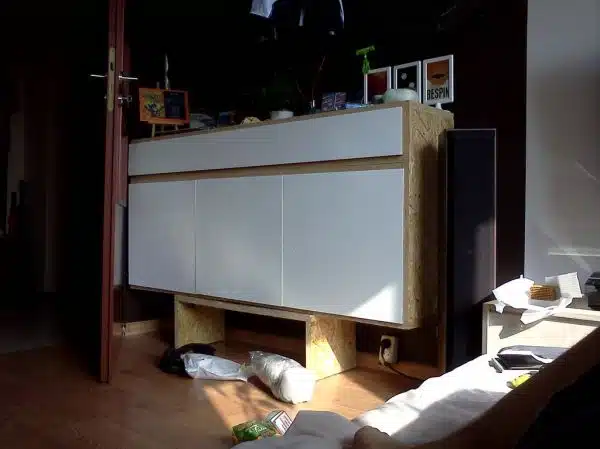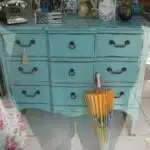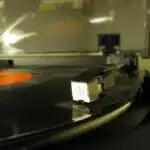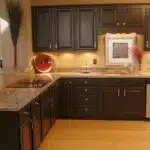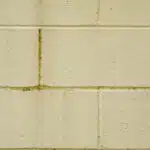Particleboard furniture is a popular choice for those seeking affordable and functional home decor. However, over time, particleboard furniture can become worn down and lackluster. If you’re looking to give your particleboard furniture a fresh new look, painting may be the solution you need.
Refurbishing particleboard furniture with paint is an effective way to breathe new life into old pieces without breaking the bank. With the right techniques and materials, you can transform your drab particleboard furniture into something stylish and modern. In this article, we will explore the steps involved in refurbishing particleboard furniture with paint. Whether you’re a DIY enthusiast or simply seeking to save money on new furnishings, this guide will provide you with all the information you need to get started on your next project.
Preparing Your Furniture For Painting
To refurbish particleboard furniture with paint, proper preparation is essential for a long-lasting finish. First, use wood filler to repair any cracks or imperfections in the furniture. This will ensure that the surface is smooth and even before painting. Apply the wood filler in thin layers, allowing each layer to dry completely before adding another layer.
After the wood filler has dried, it’s time to sand the surfaces of the furniture. Sanding is crucial to creating a surface that will adhere well to paint. Use fine-grit sandpaper to smooth out any rough spots or bumps and create a clean, even surface. Be sure to wipe away any sawdust or debris from sanding before moving on to painting.
Properly preparing your particleboard furniture for painting will ensure that the finished product looks professional and lasts for years to come. Taking the time to fill in imperfections and sand surfaces creates a solid foundation for your paint job. The next step is choosing the right type of paint for your project, which we will discuss in the following section.
Choosing The Right Type Of Paint
When refurbishing particleboard furniture, choosing the right type of paint is crucial. Not all paints are created equal, and selecting the wrong one could lead to chipping or peeling down the line. When it comes to particleboard, it’s important to choose a paint that will adhere well and withstand wear and tear. The best type of paint for particleboard furniture is an oil-based enamel paint.
Oil-based enamel paints offer superior durability and adhere well to particleboard surfaces. They also dry to a hard finish, which is essential when painting furniture that will be subjected to regular use. Another benefit of using oil-based enamel paints is their resistance to moisture, making them ideal for use in areas prone to humidity or dampness.
When it comes to painting techniques, always start with a thorough cleaning of the surface. Use a mixture of warm water and mild soap to remove any dirt or grime. Once the surface is clean and dry, apply a coat of primer before painting with your chosen color. This will help the paint adhere better and prevent chipping or peeling over time.
Color considerations are also important when refurbishing particleboard furniture. Choose colors that complement the decor of the room where the furniture will be placed. Neutral colors like beige, gray or white work well with most styles, while bolder colors like red or blue can add a pop of color to neutral spaces. It’s also important to consider the size of the piece when selecting a color scheme; darker colors can make larger pieces feel heavy while lighter colors can make smaller pieces appear larger. In the next section, we’ll take a closer look at selecting the best color scheme for your refurbished particleboard furniture.
Selecting The Best Color Scheme
Color Scheme Selection
Selecting the right color scheme for your particleboard furniture is an important step in refurbishing it with paint. Color psychology plays a crucial role in choosing the best colors for your furniture. Different colors can evoke different emotions, which can affect the mood of the room. For example, blue and green are calming colors that provide a relaxing and serene atmosphere, while red and yellow can stimulate energy and excitement.
Color coordination is also essential in creating a cohesive look for your furniture. Choosing complementary or analogous colors can help create a harmonious balance between different pieces of furniture in the room. It is also important to consider the existing color scheme of the room where the refurbished furniture will be placed. The new color scheme should complement or enhance the existing colors rather than clash with them.
In summary, selecting the best color scheme involves understanding color psychology and coordinating colors to achieve a cohesive look. Take time to experiment with different color combinations before settling on one that works best for your unique style and decor preferences. With these factors in mind, you’ll be able to transform your particleboard furniture into stylish pieces that match your personal taste and create a welcoming environment in any room. As we move onto our subsequent section about gathering necessary tools, keep these considerations in mind as they will influence every aspect of this process going forward.
Gathering The Necessary Tools
Before you start refurbishing your particleboard furniture, it’s crucial to gather all the necessary tools. Proper preparation is key to achieving a smooth and long-lasting finish. The materials required for this project are readily available in most hardware stores.
When it comes to choosing paint, go for high-quality options that are specifically designed for this type of furniture. Opting for a durable finish that can withstand wear and tear is essential. Choose a paint color that complements your home decor and personal style.
Prepping furniture is critical before painting. Start by removing any hardware such as knobs or handles. Then, clean the surfaces thoroughly with a mild detergent to remove any dirt, grease, or grime. Once cleaned, let the furniture dry completely before proceeding with the next step. This ensures that the paint adheres correctly and results in a smooth finish.
With your tools ready, and your furniture prepped, it’s time to move on to sanding your particleboard furniture for a smooth surface.
Sanding Your Furniture For A Smooth Surface
After gathering all the necessary tools, it’s time to move on to the next step in refurbishing your particleboard furniture with paint. The key to achieving a smooth and flawless finish is by sanding your furniture properly. But before you start sanding, make sure that you choose the right sandpaper.
Choosing the right sandpaper is crucial for achieving a smooth surface. Start with a coarse grit sandpaper and work your way up to finer grits until you achieve the desired smoothness. Begin by using 80-grit sandpaper and then move on to 120-grit and finally 220-grit paper. Make sure that you are consistent with your sanding technique so that you don’t end up with uneven surfaces.
Filling in cracks and gaps is an important step in preparing your particleboard furniture for painting. Use wood filler or putty to fill in any holes or cracks in your furniture. Make sure that you follow the instructions on the product label carefully while applying it. Once it’s dry, use a fine-grit sandpaper to smooth out any rough edges before moving on to the next step of applying primer.
- Sanding provides better adhesion for paint
- Filling in cracks ensures smooth surface for painting
- Proper technique prevents damage to wood surface
- Consistency during sanding ensures even finish
Now that you have successfully sanded your particleboard furniture for a smooth surface and filled in any cracks or gaps, it’s time to move on to applying primer. Applying primer will help provide better adhesion for paint and protect your furniture from future damage.
Applying Primer To Your Furniture
When selecting a primer for refurbishing particleboard furniture, it is important to consider the desired finish, the type of paint to be used, and the condition of the particleboard.
Prior to applying primer, the furniture should be thoroughly cleaned with a solution of warm water and laundry detergent, and then lightly sanded to remove any dirt or debris.
The particleboard should then be allowed to dry completely before primer is applied with a brush or roller, paying particular attention to smoothing out any imperfections.
Once the primer has been applied and has dried, the furniture is ready for the chosen paint to be applied, creating a beautiful and durable finish.
Choosing The Right Primer
Choosing the right primer is crucial when refurbishing particleboard furniture with paint. A good primer creates a smooth surface, ensures better paint adhesion, and increases durability. Primer types vary, but oil-based primers are typically recommended for particleboard furniture due to their strong bonding properties. However, water-based or latex primers can also be used as long as they are specifically formulated for porous surfaces like particleboard.
When applying primer to your furniture, there are several tips to keep in mind. First, always clean and sand the surface before applying primer to remove any dirt or imperfections. Next, apply thin coats of primer with a brush or roller instead of one thick coat to prevent drips and uneven coverage. Finally, let each coat dry completely before adding another layer.
Common mistakes when applying primer include using the wrong type of primer for the surface or failing to properly sand the surface beforehand. Additionally, over-applying primer can lead to an unsightly finish and poor adhesion of subsequent layers of paint. By choosing the right type of primer and following proper application techniques, you can ensure a successful refurbishment project that will last for years to come.
Preparing The Furniture For Primer
Before applying primer to your particleboard furniture, it is crucial to properly prepare the surface. This involves removing any existing finishes or coatings and sanding down the surface to create a smooth, even base. It is also important to ensure that the furniture is clean and free of any dirt, dust, or debris.
When sanding particleboard furniture, it is necessary to take necessary safety precautions such as wearing a mask and protective eyewear. The sandpaper used should be fine-grit (between 120 and 220) to avoid damaging the surface. Once the sanding is complete, wipe down the furniture with a damp cloth to remove any remaining dust.
After preparing the furniture for primer, it is important to apply a sealant before beginning the priming process. This will help prevent moisture from penetrating into the particleboard and causing damage over time. By taking these necessary steps in preparing your furniture for primer application, you can ensure better adhesion and durability of subsequent layers of paint.
Painting Your Furniture With A Brush
When it comes to painting your particleboard furniture with a brush, there are a few important things to keep in mind. Firstly, it’s important to select the right type of paint for the job. You’ll want something that is durable and can withstand everyday wear and tear. Acrylic latex paint is a great option as it dries quickly, is water-resistant, and has excellent adhesion.
Before you begin painting, it’s essential to prepare your furniture properly. Sanding the surface will help the paint adhere better and create a smoother finish. Start with a coarse grit sandpaper (around 120 grit) and work your way up to a finer grit (around 220 grit). Once you’ve sanded your furniture, wipe away any dust with a damp cloth.
When it comes to applying the paint, brush stroke techniques are key to achieving a professional-looking finish. Start by applying thin coats of paint in long strokes using a quality brush. Avoid overloading your brush with too much paint as this can lead to drips and uneven coverage. As you work, try to maintain an even pressure on the brush and avoid stopping mid-stroke. For best results, mix your paint colors beforehand so that you can achieve an even color throughout your furniture piece.
With these tips in mind, you should be well on your way to refurbishing your particleboard furniture with ease! However, if you’re looking for an alternative method or want to achieve a different look, consider painting your furniture with spray paint instead.
Painting Your Furniture With Spray Paint
Ah, spray paint. The go-to for those who want a quick and easy way to add some color to their furniture. While it may seem like the easier option compared to brush painting, it does require some finesse to get that flawless finish. One thing to keep in mind when using spray paint is that it can be tricky when it comes to intricate designs. But fear not, there are ways around this.
When using spray paint on particleboard furniture, it’s important to choose the right type of paint. Look for a spray paint that is specifically designed for use on wood surfaces. This will ensure that the paint adheres well and doesn’t chip or peel off easily. It’s also important to prime the surface beforehand with a wood primer.
Now onto those intricate designs. A useful tip is to use masking tape or stencils to create clean lines and prevent overspray. This will help you achieve a professional-looking finish without any mess or mistakes. Take your time and work in small sections, allowing each coat of paint to dry completely before moving on to the next section.
In order to achieve a flawless finish when using spray paint, patience is key. Don’t rush through the process as this can result in unsightly drips and uneven coverage. Spray lightly and evenly, holding the can about 8-10 inches away from the surface of your furniture. Once you’ve completed your first coat of paint, allow it to dry completely before applying a second coat for added durability and protection against wear-and-tear over time.
Applying A Second Coat Of Paint
When painting particleboard furniture, it is important to apply a second coat of paint to achieve a smooth and even finish. However, there are some tips that can help you avoid streaks and brush marks when applying the second coat. First, make sure the first coat is completely dry before applying the second coat. It’s recommended to wait at least 24 hours before applying the next layer of paint.
Before applying the second coat of paint, lightly sand the surface with fine-grit sandpaper to remove any bumps or imperfections. This will help ensure that the paint adheres evenly and smoothly. Use a high-quality synthetic brush or foam roller to apply the second coat of paint in long, even strokes. Avoid pressing too hard on the brush or roller as this can cause streaks and brush marks.
To prevent streaks and brush marks, it’s important not to overwork the paint while applying it. Apply enough paint so that it covers evenly but not so much that it drips or runs down the furniture piece. Once you have applied the second coat of paint, allow it to dry completely before adding any decorative touches or accents to your particleboard furniture piece. This usually takes around 24-48 hours depending on weather conditions and humidity levels.
As you wait for your painted particleboard furniture piece to dry completely after its second coat of paint application, start thinking about how you want to add decorative touches and accents to enhance its look further. There are various ways you can do this, such as adding knobs and handles, stenciling designs onto surfaces, or decoupaging paper cutouts onto specific areas of your furniture piece. With these techniques in mind, let’s explore some creative ways you can add flair and personality to your newly-refurbished particleboard furniture piece!
Adding Decorative Touches And Accents
Painting patterns can be used to create a unique look on particleboard furniture. Stenciling is another way to make designs on the surface of the furniture. Decoupage is a technique that can be used to layer patterns onto the surface of the particleboard. Adding fabric is a great way to add color and texture to the piece of furniture.
Painting Patterns
As a furniture refinishing expert, I understand the importance of adding decorative touches and accents to particleboard furniture that needs a little sprucing up. One way to do this is by using painting patterns to create a unique and personalized look. Painting techniques such as stenciling or freehand designs can add an extra layer of interest to your refurbished piece.
When considering painting patterns, it’s important to also think about color combinations. Using complementary colors or monochromatic schemes can add depth and dimension to your furniture piece. For example, a white dresser with gold stencil designs or a navy blue nightstand with white polka dots can bring new life to old particleboard pieces.
Experimenting with different painting patterns and color combinations can allow you to truly express your creativity in refurbishing particleboard furniture. Whether it’s using stripes, chevron, or floral designs, the possibilities are endless. With a little bit of patience and practice, you can elevate any piece of particleboard furniture into something unique and beautiful.
Stenciling
When refurbishing particleboard furniture, one of the most effective ways to add decorative touches and accents is through stenciling. This technique involves using a cut-out pattern or template to apply paint onto a surface, resulting in a clean and precise design. Stencil design ideas are endless, from geometric shapes to intricate florals, making it a versatile and customizable option for any furniture piece.
To achieve a successful stencil design, it’s important to use proper stenciling techniques. One helpful tip is to use painter’s tape to secure the stencil in place and prevent any bleeding or smudging. Another technique is to use a stippling brush instead of traditional brush strokes, which can help create a more even and textured look. Experimenting with different color combinations can also enhance the overall effect of your stencil design.
Stenciling not only adds an extra layer of interest and personality to your refurbished furniture piece but also serves as an affordable alternative to purchasing new decor. With endless stencil design ideas and techniques at your disposal, you can transform any particleboard piece into something truly unique and eye-catching.
Finishing Your Furniture With A Protective Coat
Now that you have added decorative touches and accents to your particleboard furniture, it’s time to apply a protective coat. This final step will not only give your furniture a polished look, but also protect it from scratches, stains and moisture. Applying clear coat is essential in maintaining the longevity of your refurbished furniture.
Before applying any protective coating, ensure that there is proper ventilation in the workspace. This will prevent any harmful fumes from accumulating and affecting your health. It’s best to work in an area with good air flow or use a respirator mask if necessary. The importance of ventilation cannot be stressed enough when working with chemicals.
When applying the clear coat, use long and even strokes with a brush or sprayer depending on the product used. Here are some tips to keep in mind:
- Apply thin coats for better coverage.
- Allow each coat to dry completely before adding another layer.
- Sand lightly between coats for optimal adhesion.
- Follow manufacturer instructions for curing time.
By following these steps, your particleboard furniture will have a smooth and durable finish that can withstand daily wear and tear. Next up, we’ll discuss drying and curing your newly refinished piece to ensure its longevity.
Drying And Curing Your Furniture
Once you have painted your particleboard furniture, the next step is to let it dry and cure properly. Drying refers to the process of removing moisture from the paint so that it becomes dry to the touch. Curing, on the other hand, is a more extended process that involves the hardening and strengthening of the paint film. Proper drying and curing are essential for ensuring that your paint job looks great and lasts for a long time.
To prevent smudging or sticking of your freshly painted particleboard furniture, there are several tips you can follow during the drying and curing process. First, make sure that you allow enough time for each coat of paint to fully dry before applying another one. This will prevent smudging or blending of colors. Secondly, avoid touching or handling the furniture until it is completely dry to avoid leaving fingerprints or smudges on it.
Another crucial aspect of drying and curing particleboard furniture after painting is proper ventilation in your workspace. Paint fumes can be harmful if inhaled in large amounts over an extended period. Therefore, you should ensure that your workspace has adequate ventilation by opening windows or using fans to circulate air. This will help protect you from inhaling toxic fumes while allowing your painted furniture to dry and cure properly.
In conclusion, proper drying and curing are crucial for achieving a successful refinishing project with particleboard furniture. By following these tips for preventing paint smudges during drying and properly ventilating your workspace, you can ensure a safe environment for yourself while improving the appearance of your furniture pieces. Next up, we will discuss some common mistakes people make when painting their particleboard furniture and how to avoid them.
Preventing Common Painting Mistakes
After the drying and curing process of your particleboard furniture, it is time to move on to the next step of painting. One of the most common mistakes in painting furniture is not properly preparing before starting. Using painter’s tape to cover areas that should not be painted is an essential step. It helps to achieve clean lines and prevents any accidental paint marks on unwanted areas.
Another important aspect of painting particleboard furniture is avoiding drips. These can occur when too much paint is applied at once or when the paint is too thick. To prevent drips, it is crucial to apply thin coats of paint and allow each coat to dry completely before adding another layer. This ensures a smooth finish without any imperfections.
By following these tips, you can successfully refurbish your particleboard furniture with a fresh coat of paint. However, maintaining your refurbished furniture is just as important as the actual painting process itself. In the next section, we will discuss some simple yet effective ways to keep your newly painted furniture looking its best for years to come.
Maintaining Your Refurbished Furniture
To make your particleboard furniture last, you must commit to regular maintenance. Maintenance is manageable and will make your pieces look pristine. One tip for longevity is to dust regularly using a soft cloth, which will prevent dust build-up that could damage the finish. This technique also prevents scratches when dusting with harsh materials.
Cleaning techniques are crucial in maintaining the beauty of your refurbished furniture. When cleaning particleboard furniture, use a mild soap and water mixture or a wood cleaner specific to your type of furniture. Avoid using harsh chemicals as they can damage the surface and cause discoloration. Instead, use a microfiber cloth to dry the surface after cleaning, ensuring no moisture remains that can cause swelling or warping.
Another technique for maintaining your refurbished furniture is to keep it away from direct sunlight or heat sources such as radiators or fireplaces. Sunlight and heat can cause fading, drying out the wood, and warping of joints over time. Keeping it at a consistent temperature range will prolong its life expectancy while still allowing you to enjoy its beauty.
To showcase your newly refurbished furniture properly, you need to know how to stage it effectively in any room setting. With proper maintenance, you’ll be able to get more use out of each piece while keeping them looking great for years to come.
Showcasing Your Newly Refurbished Furniture
Once you have successfully refurbished your particleboard furniture with paint, it’s time to showcase your hard work. Showcasing refurbished furniture can be a great way to add character and charm to your home decor. There are a variety of ways to decorate with refurbished furniture, ranging from functional pieces like bookshelves or desks, to decorative items like picture frames or wall art.
One effective way to showcase your newly refurbished furniture is by incorporating it into a room’s color scheme. Pick out accent colors from the piece of furniture and use them in other elements of the room such as pillows, curtains, or rugs. This will help tie the room together and make the refurbished piece feel like an intentional design choice rather than just an old piece of furniture.
Another option is to use refurbished furniture as a statement piece in a room. For example, if you’ve refinished an old dresser with bold colors or patterns, place it prominently in the room and keep other elements simple and neutral so that the dresser becomes the focal point. By showcasing your refurbished furniture in this way, you’ll not only be highlighting your creativity and skill but also giving new life to something that might have otherwise been thrown away.
| Tables | Are | Cool |
|---|---|---|
| You | Can | Make |
| Them | Look | Pretty |
| With Markdown |
Overall, showcasing refurbished furniture can be a fun and rewarding way to decorate your home while also being environmentally conscious. By giving new life to old pieces of furniture, you’re not only reducing waste but also creating unique and personalized decor. Whether you choose to incorporate refurbished pieces into a room’s color scheme or use them as statement pieces, there are countless ways to show off your newly refinished items. Get creative and have fun!
Conclusion
Refurbishing particleboard furniture with paint is a cost-effective way to give your old and worn-out furniture a new lease on life. However, it takes careful planning and execution to achieve professional-looking results. Before diving into the project, you need to prepare your furniture, choose the right type of paint, select the best color scheme, gather the necessary tools, sand your furniture for a smooth surface, dry and cure your furniture properly, prevent common painting mistakes, and maintain your refurbished furniture.
The key to success in refurbishing particleboard furniture lies in taking time to do each step correctly. Rushing through any of these steps can lead to unsatisfactory results that may require redoing the process all over again. Once you have mastered these skills and techniques, you will find that refurbishing particleboard furniture with paint is an easy and enjoyable DIY project that can transform any room in your home.
In summary, by following the steps outlined above for refurbishing particleboard furniture with paint, you can save money while creating beautiful pieces that match your personal taste and style. Remember to take your time and follow each step carefully for best results. With patience and attention to detail, anyone can become an expert at refinishing furniture with paint. So why not start today? Your home will thank you for it!
Image Credits
- “DIY OSB dresser” by ardas:ardas (featured)

